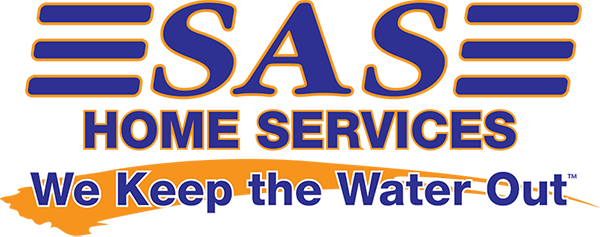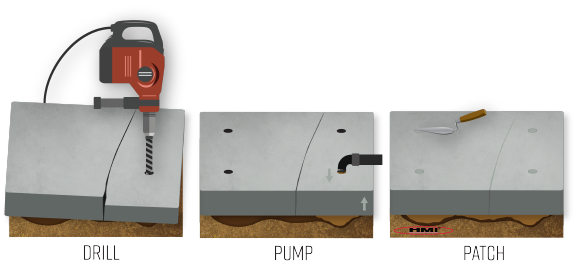Concrete lifting, also known as mud jacking, is a procedure that raises and stabilizes concrete slabs that have settled, sunk, or cracked over time. It is a cost-effective and efficient alternative to completely replacing concrete slabs. Here are some of the key reasons why people use concrete lifting services:
- Cost-effective: Concrete lifting is usually less expensive than replacing an entire slab. The process uses fewer materials and requires less labor than complete replacement, saving the homeowner or business owner a significant amount of money.
- Speed and convenience: The procedure can often be completed in just a few hours, and the concrete is typically ready to bear weight immediately or within a few hours of the lifting. This is much faster than removing old concrete, preparing the site, pouring new concrete, and waiting for it to cure, which could take several days or more.
- Less disruptive: Unlike concrete replacement, concrete lifting does not require heavy equipment or extensive labor, and it does not create a lot of noise or dust. This can be a significant advantage in residential areas or places where disruption needs to be minimized.
- Prevent further damage: When a concrete slab sinks or settles, it can create a tripping hazard or lead to damage to the structure it supports. Concrete lifting quickly rectifies these problems, preventing further damage and potential injury.
- Eco-friendly: By reusing the existing slab, concrete lifting minimizes waste. It doesn’t contribute to landfill as replacing the slab would. Additionally, it uses fewer resources than the production of new concrete.
- Maintains property value: Uneven or damaged concrete can significantly detract from a property’s curb appeal and value. Concrete lifting can quickly restore the appearance of driveways, sidewalks, patios, and other concrete surfaces, helping to maintain or even increase a property’s value.
- Water control: Uneven concrete can lead to poor water runoff, resulting in pooling water and potential damage to your property. Concrete lifting can ensure proper slope for water runoff, protecting your property from potential water damage.
What exactly is concrete lifting?
Concrete lifting, also known as slab jacking or mud jacking, is a technique used to correct uneven or sunken concrete surfaces. This process raises the concrete slab by injecting a mixture underneath it, resulting in a level surface. It’s a preferred method to replacing the entire concrete slab because it’s quicker, less invasive, and often more cost-effective.
Why Does Concrete Sink?
Concrete surfaces can sink or become uneven due to several reasons:
- Soil erosion: Over time, water runoff can erode the soil underneath concrete slabs, creating voids that cause the concrete to sink.
- Soil compaction: If the soil wasn’t properly compacted during the initial installation of the slab, it could compress over time and lead to sinking.
- Root growth: Tree roots can push against and underneath concrete slabs, leading to uneven surfaces.
- Natural settling: Over time, newly placed concrete can naturally settle, leading to minor shifts in its level.
The Concrete Lifting Process:
- Inspection: Before the lifting process begins, professionals will assess the extent of the damage and the best approach for repair.
- Hole drilling: Small holes are drilled into the sunken concrete slab.
- Material injection: A mixture (usually mud, polyurethane, or other proprietary mixtures) is pumped into the holes, filling the void underneath the concrete.
- Lifting: As the mixture fills the void, it exerts pressure, slowly lifting the concrete to its original level.
- Sealing: Once the concrete is level, the holes are sealed, ensuring the mixture remains intact and the concrete surface looks smooth.
- Curing: The injected material will need some time to set and harden. Once cured, the surface can be used as usual.
Benefits of Concrete Lifting:
- Cost-effective: Compared to replacing the entire concrete slab, lifting is often more affordable.
- Time-saving: The process is relatively quick, often completed in a few hours.
- Environmentally friendly: Lifting reuses the existing concrete, reducing the need for new material and minimizing waste.
- Minimal disruption: Since it doesn’t involve heavy machinery or the removal of large chunks of concrete, the surrounding landscape is less likely to be disturbed.
- Safety: Uneven surfaces can pose tripping hazards. Concrete lifting rectifies this issue, ensuring a safer environment.
Limitations and Considerations:
While concrete lifting is an excellent solution for many situations, it may not be suitable for slabs with significant structural damage or for areas where the underlying soil is extremely unstable. It’s essential to consult with professionals who can assess whether lifting is the right solution for a particular scenario.
Conclusion:
Concrete lifting offers a practical and efficient solution for addressing sunken or uneven concrete surfaces. Whether it’s a driveway, sidewalk, patio, or garage floor, this method can extend the lifespan of the slab and improve both safety and aesthetics. As with all repairs, it’s crucial to choose reputable professionals to ensure the job is done correctly.



